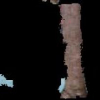Free Online Productivity Tools
i2Speak
i2Symbol
i2OCR
iTex2Img
iWeb2Print
iWeb2Shot
i2Type
iPdf2Split
iPdf2Merge
i2Bopomofo
i2Arabic
i2Style
i2Image
i2PDF
iLatex2Rtf
Sci2ools
ICCV
1999
IEEE
1999
IEEE
An Integrated Bayesian Approach to Layer Extraction from Image Sequences
This paper describes a Bayesian approach for modeling 3D scenes as a collection of approximately planar layers that are arbitrarily positioned and oriented in the scene. In contrast to much of the previous work on layer based motion modeling, which compute layered descriptions of 2D image motion, our work leads to a 3D description of the scene. We focus on the key problem of automatically segmenting the scene into layers based on stereo disparity data from multiple images. The prior assumptions about the scene are formulated within a Bayesian decision making framework, and are then used to automatically determine the number of layers and the assignment of individual pixels to layers. Although using a collection of 3D layers has been previously proposed as an efficient and effective representation for multimedia applications, results to date have relied on hand segmentation. In contrast, the work described here aims at getting the best automatic segmentation that is possible based on d...
Compute Layered Descriptions | Computer Vision | Decision Making Framework | ICCV 1999 | Layer Based Motion | Planar Layers | Stereo Disparity Data |
| Added | 15 Oct 2009 |
| Updated | 31 Oct 2009 |
| Type | Conference |
| Year | 1999 |
| Where | ICCV |
| Authors | Philip H. S. Torr, Richard Szeliski, P. Anandan |
Comments (0)

